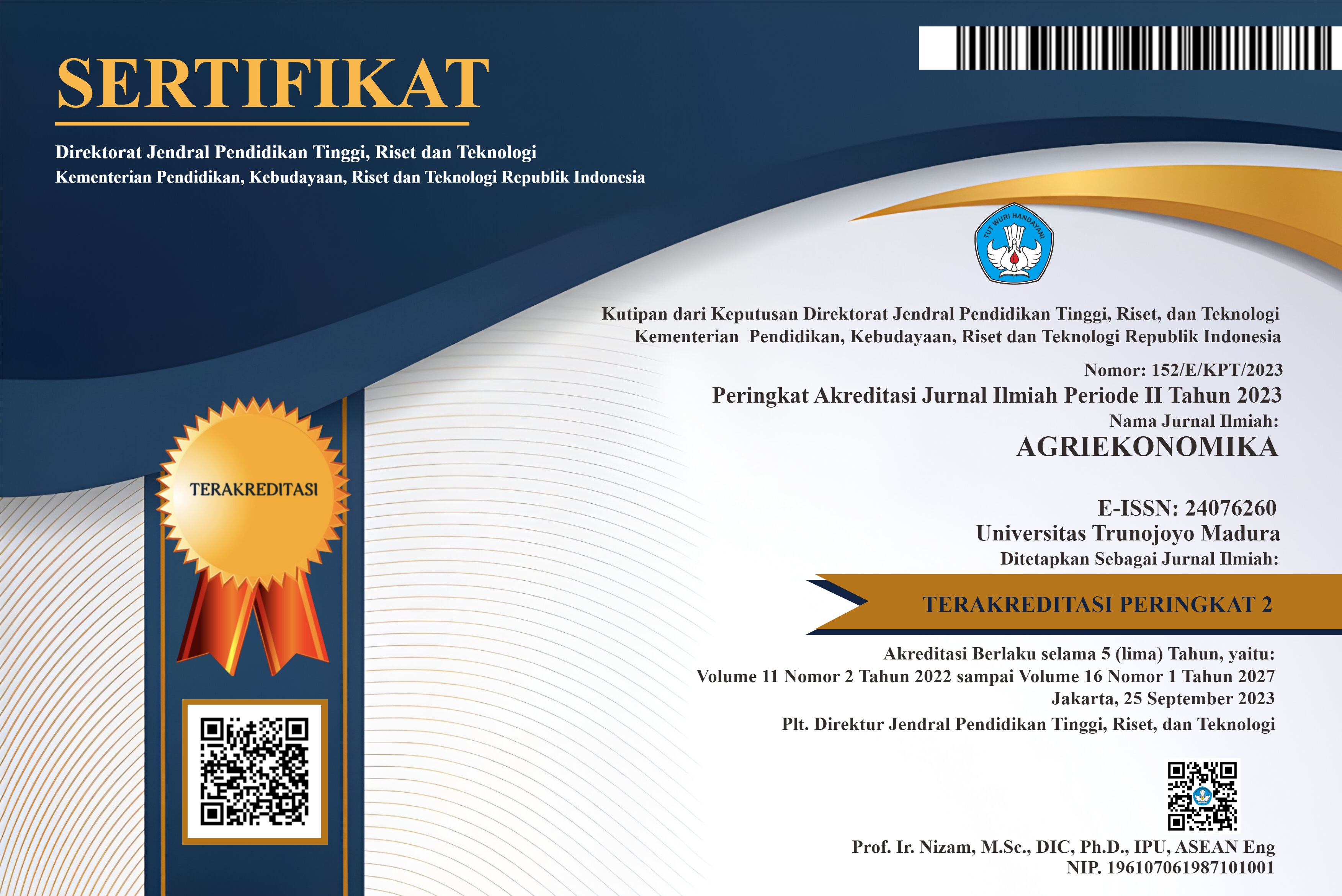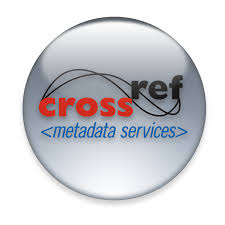Barriers Factor Analysis of Fish Consumption Behavior in the Special Region of Yogyakarta and Central Java
Abstract
The low level of fish consumption is the initial phenomenon of this study. This study's general objective is to determine the grouping of factors inhibiting fish consumption and confirm the suitability of the factors. This type of research is a survey. Samples were taken by fulfilling the criteria of purchasing marine fish for family consumption, food processing, or cooking for daily family consumption. The selection of research sites with consideration of areas with fish low consumption levels in DIY and Centre of Java. This study involved 427 respondents from various regions in DIY-Centre of Java. Data analysis techniques in this study used factor analysis and Anova. Based on data analysis, it is known that there are six factors of barriers to fish consumption, namely family member preferences, processing methods, distribution and availability, myths and knowledge, cost or price, and tastes. The factors are then successfully reduced to three main factors, namely individual, food, and environment characteristics.
Keywords
Full Text:
PDFReferences
Augood, C., Chakravarthy, U., Young, I., Vioque, J., De Jong, P. T. V. M., Bentham, G., Rahu, M., Seland, J., Soubrane, G., & Tomazzoli, L. (2008). Oily fish consumption, dietary docosahexaenoic acid and eicosapentaenoic acid intakes, and associations with neovascular age-related macular degeneration. The American Journal of Clinical Nutrition, 88(2), 398–406.
Badr, L. M., Salwa, O., & Ahmed, Y. (2015). Perceived barriers to consumption of freshwater fish in Morocco. British Food Journal, 117(1), 274–285.
Bagozzi, R. P., Wong, N., Abe, S., & Bergami, M. (2000). Cultural and situational contingencies and the theory of reasoned action: Application to fast food restaurant consumption. Journal of Consumer Psychology, 9(2), 97–106.
Brunsø, K., Verbeke, W., Olsen, S. O., & Jeppesen, L. F. (2009). Motives, barriers and quality evaluation in fish consumption situations: Exploring and comparing heavy and light users in Spain and Belgium. British Food Journal.
Carlucci, D., Nocella, G., De Devitiis, B., Viscecchia, R., Bimbo, F., & Nardone, G. (2015). Consumer purchasing behaviour towards fish and seafood products. Patterns and insights from a sample of international studies. Appetite, 84, 212–227.
Child, D. (2006). The essentials of factor analysis. A&C Black.
Cornier, M.-A., Salzberg, A. K., Endly, D. C., Bessesen, D. H., & Tregellas, J. R. (2010). Sex-based differences in the behavioral and neuronal responses to food. Physiology & Behavior, 99(4), 538–543.
Djunaidah, I. S. (2017). Tingkat konsumsi ikan di Indonesia: ironi di negeri bahari. Jurnal Penyuluhan Perikanan Dan Kelautan, 11(1), 12–24.
Foxall, G. R., & Greenley, G. E. (1999). Consumers’ emotional responses to service environments. Journal of Business Research, 46(2), 149–158.
Gofton, L. R., & Marshall, D. W. (1992). Deconstructing sensory preferences; social factors influencing the demand for dark fish. Pelagic Fish: The Resource and Its Exploitation Eds Burt, JR, Hardy, R. and Whittle, KJ, 272–277.
Grieger, J. A., Miller, M., & Cobiac, L. (2012). Knowledge and barriers relating to fish consumption in older Australians. Appetite, 59(2), 456–463.
He, K. (2009). Fish, long-chain omega-3 polyunsaturated fatty acids and prevention of cardiovascular disease—eat fish or take fish oil supplement? Progress in Cardiovascular Diseases, 52(2), 95–114.
Ivoninskii, V. (2016). Examining barriers to seafood consumption among young adults in Norway and Russia. UiT The Arctic University of Norway.
Kitano, S., & Yamamoto, N. (2020). The role of consumer knowledge, experience, and heterogeneity in fish consumption: Policy lessons from Japan. Journal of Retailing and Consumer Services, 56, 102151.
Lee, M.-K., & Nam, J. (2019). The determinants of live fish consumption frequency in South Korea. Food Research International, 120, 382–388.
Leek, S., Maddock, S., & Foxall, G. (2000). Situational determinants of fish consumption. British Food Journal.
Mohan Dey, M., Rab, M. A., Paraguas, F. J., Piumsombun, S., Bhatta, R., Ferdous Alam, M., & Ahmed, M. (2005). Fish consumption and food security: a disaggregated analysis by types of fish and classes of consumers in selected Asian countries. Aquaculture Economics & Management, 9(1–2), 89–111.
Randall, E., & Sanjur, D. (1981). Food preferences—their conceptualization and relationship to consumption. Ecology of Food and Nutrition, 11(3), 151–161.
Scholderer, J., & Grunert, K. G. (2001). Does generic advertising work? A systematic evaluation of the Danish campaign for fresh fish. Aquaculture Economics & Management, 5(5–6), 253–271.
Shepherd, R. (1989). Factors influencing food preferences and choice (Vol. 3). Wiley Chichester.
Skuland, S. E. (2015). Healthy eating and barriers related to social class. The case of vegetable and fish consumption in Norway. Appetite, 92, 217–226.
Stran, K. A., & Knol, L. L. (2013). Determinants of food label use differ by sex. Journal of the Academy of Nutrition and Dietetics, 113(5), 673–679.
Trondsen, T., Scholderer, J., Lund, E., & Eggen, A. E. (2003). Perceived barriers to consumption of fish among Norwegian women. Appetite, 41(3), 301–314.
Vanhonacker, F., Pieniak, Z., & Verbeke, W. (2010). Fish market segmentation based on consumers’ motives, barriers and risk perception in Belgium. Journal of Food Products Marketing, 16(2), 166–183.
Verbeke, W., & Vackier, I. (2005). Individual determinants of fish consumption: application of the theory of planned behaviour. Appetite, 44(1), 67–82.
DOI: https://doi.org/10.21107/agriekonomika.v11i1.12993
Refbacks
- There are currently no refbacks.







